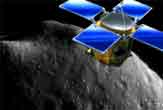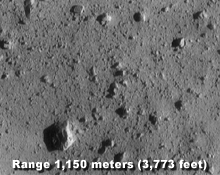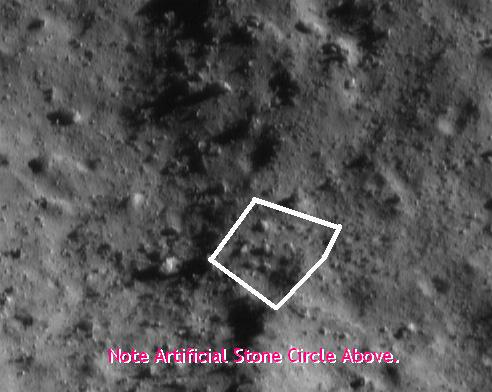|
|
Secret Places | |
~ Asteroid Enigma ~
Ancient Stone Henges - the 'NEAR' Peanut Gallery
on a Neighboring Martian Asteroid



Spacecraft Touchdown Directly On Stone Menhirs





The 'Near Earth Asteroid Rendezvous' (NEAR) spacecraft was launched on
February 17, 1996 from Cape Canaveral, FL and was programmed to rendezvous with asteroid 433 Eros on
February 14, 2000. 'NEAR' was to orbit Eros for a year, conducting scientific studies.
The 'NEAR' Shoemaker spacecraft was designed and built by The Johns Hopkins University Applied Physics
Laboratory, which managed the mission for NASA.
The NEAR mission was the first comprehensive study of the physical geology, composition
and geophysics of an asteroid. The mission had three main scientific goals: Determinethe physical and
geological properties of a near- Earth asteroid (NEA); Clarify relationships
between asteroids, comets and meteorites; and further our understanding of how,
and under what conditions planets formed.
'NEAR' Shoemaker was the first solar-powered spacecraft to fly beyond the orbit of Mars. It
had the capacity to operate as far as 203 million miles from the Sun.

'NEAR' was not initially designed to land. The chances were believed to be less than 1%.
Despite the odds, on February 12, 2001, the NEAR Shoemaker spacecraft touched down on
the 433 Eros asteroid and began sending data from the surface of Eros. It has returned 10
times more data than originally planned. The above is the last images sent to earth
while "NEAR' landed on the asteroid.
The 'NEAR' Shoemaker spacecraft was designed and built by The Johns Hopkins University Applied Physics Laboratory, which managed the mission for NASA. The NEAR mission was the first comprehensive study of the physical geology, composition and geophysics of an asteroid. The mission had three main scientific goals: Determinethe physical and geological properties of a near- Earth asteroid (NEA); Clarify relationships between asteroids, comets and meteorites; and further our understanding of how, and under what conditions planets formed.
'NEAR' Shoemaker was the first solar-powered spacecraft to fly beyond the orbit of Mars. It had the capacity to operate as far as 203 million miles from the Sun.

'NEAR' was not initially designed to land. The chances were believed to be less than 1%. Despite the odds, on February 12, 2001, the NEAR Shoemaker spacecraft touched down on the 433 Eros asteroid and began sending data from the surface of Eros. It has returned 10 times more data than originally planned. The above is the last images sent to earth while "NEAR' landed on the asteroid.

 Mystery Faces
Mystery Faces 



